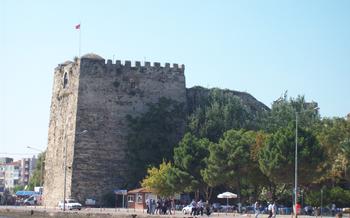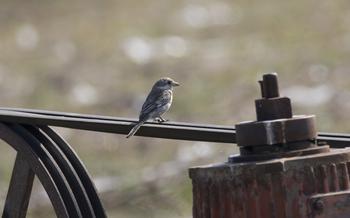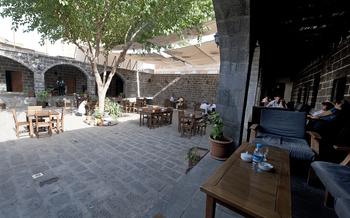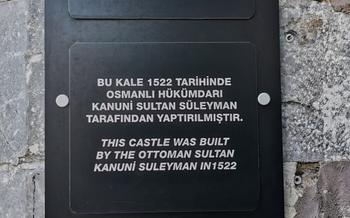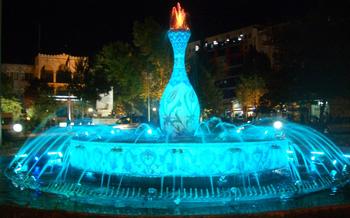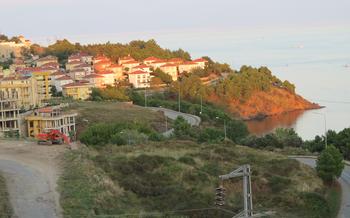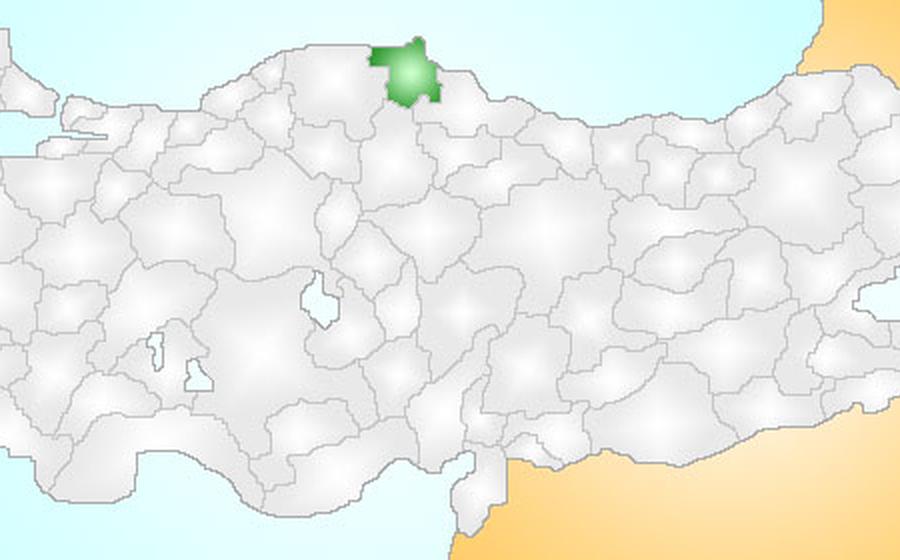
Boyabat Historical Pigeon Houses
- Historical Significance
- Types of Pigeon Houses
- Pigeon Breeding and Management
- Economic and Social Impact
- Architectural Features
- Location and Accessibility
- Things to See and Do
- Cultural Experiences
- Local Handicrafts
- Sustainable Tourism Practices
- Best Photo Spots
- Local Cuisine
- Accommodation Options
- Transportation within Boyabat
- Insider Tips
Historical Significance
The Boyabat Historical Pigeon Houses stand as testaments to Turkey's rich cultural heritage and architectural ingenuity. Their history is deeply intertwined with the local economy and trade, serving as centers of commerce and exchange. The pigeon houses were constructed using traditional techniques and materials, showcasing the skills and craftsmanship of the region's builders. Today, these structures are not only functional but also serve as symbols of cultural identity and are actively preserved and restored to ensure their legacy for generations to come.
Types of Pigeon Houses
The pigeon houses of Boyabat come in various styles and designs, reflecting the creativity and ingenuity of their builders. While they share common architectural principles, each pigeon house exhibits unique features and characteristics.
One notable variation is the size and shape of the pigeon houses. Some are tall and cylindrical, while others are shorter and dome-shaped. The materials used also vary, with some pigeon houses constructed from stone and others from mud bricks.
Another distinguishing feature is the design of the nesting boxes. The size and arrangement of the boxes are carefully considered to ensure the well-being of the pigeons. Some pigeon houses have individual nesting boxes, while others have communal nesting areas.
Additionally, some pigeon houses are adorned with intricate designs and decorative elements. These decorations may include geometric patterns, carvings, and colorful tiles. They reflect the artistic talents of the builders and add to the overall aesthetic appeal of the pigeon houses.
Examples of well-preserved and notable pigeon houses include the "Taşhan" pigeon house, which is renowned for its impressive size and intricate stone carvings. Another remarkable pigeon house is the "Kale" pigeon house, situated on a hill overlooking the city. It offers stunning panoramic views of the surrounding landscape.
Pigeon Breeding and Management
In Boyabat, the art of pigeon breeding has been passed down through generations, with local enthusiasts maintaining traditional methods and techniques. Pigeon keepers construct specialized lofts and nesting boxes to attract and house their colonies. These structures often feature intricate designs and elevated perches, providing a comfortable and secure environment for the birds.
To ensure a thriving pigeon population, breeders employ various strategies. They carefully select and pair breeding pigeons, paying attention to their genetic traits and health. Regular feeding and maintenance are essential, with pigeons provided a balanced diet of grains, seeds, and minerals. Water sources are also crucial, as pigeons require a constant supply of fresh water for drinking and bathing.
Beyond breeding, pigeons play a significant role in agriculture and pest control. Their droppings, known as guano, serve as a valuable fertilizer for crops, enhancing soil fertility and boosting yields. Additionally, pigeons are natural predators of insects and other pests, contributing to a balanced ecosystem.
However, pigeon breeding is not without its challenges. Diseases, predators, and adverse weather conditions can impact the health and survival of pigeon colonies. Breeders must remain vigilant in monitoring their flocks and implementing preventative measures to safeguard their birds.
Economic and Social Impact
The pigeon houses of Boyabat have played a significant role in the local economy and trade. In the past, pigeons were an important source of food, fertilizer, and income for local communities. Pigeon droppings were used as fertilizer for crops, while the birds themselves were consumed as meat or sold for their feathers and other products. Additionally, pigeon houses served as a symbol of wealth and prestige, and their owners often engaged in trade and barter with neighboring regions.
The social significance of pigeons and pigeon houses in Boyabat is also noteworthy. Pigeons were considered sacred animals in many cultures, and their presence was believed to bring good luck and prosperity. Pigeon keeping was a communal activity, and people often worked together to build and maintain the pigeon houses. This sense of cooperation and shared responsibility strengthened the social bonds within the community.
Today, pigeon houses continue to have a positive impact on the livelihood and well-being of local communities in Boyabat. The sale of pigeon-related products, such as fertilizer, meat, and feathers, provides income for many families. Additionally, the pigeon houses attract tourists and bird enthusiasts, who contribute to the local economy through their spending. The preservation of pigeon houses and the associated traditions also helps to maintain the cultural identity of the region and promote a sense of pride among the local population.
Architectural Features
The pigeon houses of Boyabat stand out for their unique architectural features and design principles. Constructed using local materials and traditional techniques, these structures showcase the ingenuity and craftsmanship of their builders. The pigeon houses typically feature a cylindrical or square shape with a domed roof, ensuring adequate ventilation and protection for the pigeons. The use of stone, brick, and mud in construction contributes to the durability and longevity of these structures. Intricate designs and decorative elements, such as arches, cornices, and colorful tiles, add aesthetic value and visual appeal to the pigeon houses, making them a feast for the eyes.
Location and Accessibility
The Boyabat Historical Pigeon Houses are conveniently located within the city of Boyabat, in the Sinop province of Turkey. Visitors can easily access the pigeon houses by various transportation options, including buses and taxis. The city is well-connected by road, making it easy to reach by car or rental vehicle.
For those coming from afar, the nearest airport is Sinop Airport (SIN), located about 110 kilometers from Boyabat. From the airport, visitors can take a bus or arrange for a private transfer to reach the city.
The best time to visit Boyabat for an optimal experience is during the spring or fall seasons, when the weather is pleasant and the pigeon houses are teeming with activity. To make the most of your trip, it's advisable to plan your visit for at least two days to fully explore the pigeon houses and immerse yourself in the local culture.
Things to See and Do
Boyabat's pigeon houses are not just historical monuments but also offer a range of activities and attractions for visitors. Guided tours are available, providing insights into the history, cultural significance, and construction techniques of these unique structures. Educational programs are offered, especially for school groups and interested individuals, to learn about the role of pigeons in agriculture, pest control, and local traditions.
Photography enthusiasts will find Boyabat a paradise, with endless opportunities to capture stunning shots of the pigeon houses against the backdrop of the surrounding landscape. Birdwatching enthusiasts can observe a variety of pigeon species, including the famous Anatolian rock pigeon, known for its unique markings and flight patterns.
Local markets and shops in Boyabat offer a variety of pigeon-related products, such as traditional pigeon feeders, decorative items, and souvenirs. Visitors can purchase these items as mementos of their trip or as gifts for friends and family.
Cultural Experiences
Immerse yourself in the vibrant culture and traditions of Boyabat, where pigeons hold a special place in the hearts of the locals. Engage with passionate pigeon breeders and enthusiasts who share their knowledge and stories about these remarkable birds. Attend cultural events and festivals that celebrate the rich heritage associated with pigeons, showcasing traditional music, dance, and culinary delights. Don't miss the opportunity to sample local cuisine featuring pigeon dishes, a testament to the deep connection between the community and these feathered creatures.
Local Handicrafts
The vibrant culture of Boyabat extends beyond its pigeon houses, finding expression in a variety of local handicrafts inspired by these iconic structures. Artisans in the region create intricate pottery pieces, hand-woven textiles, and decorative items adorned with pigeon motifs. These handicrafts serve as a testament to the region's rich heritage and provide a unique opportunity for visitors to take home a piece of Boyabat's charm.
In the bustling local markets, visitors can find an array of souvenirs and mementos that celebrate the town's pigeon heritage. From hand-painted ceramics depicting flocks of pigeons in flight to intricately carved wooden sculptures, these items offer a tangible connection to the town's identity. By purchasing these handicrafts, visitors not only support local artisans but also contribute to the preservation of traditional crafts that have been passed down through generations.
One of the most popular handicrafts associated with Boyabat is pigeon-shaped pottery. These decorative pieces, often adorned with vibrant colors and intricate patterns, are a symbol of the town's enduring bond with its feathered inhabitants. Visitors can find these unique pottery creations in various sizes and designs, making them a perfect souvenir or gift to cherish.
Another highlight of Boyabat's handicrafts is the hand-woven textiles featuring pigeon motifs. These textiles, often made from natural fibers such as cotton or wool, showcase the skill and artistry of local weavers. From vibrant cushion covers to delicate tablecloths, these textiles add a touch of Boyabat's charm to any home.
By exploring the local markets and supporting the talented artisans of Boyabat, visitors can not only take home a piece of the town's history but also contribute to the preservation of traditional crafts that define the region's cultural identity.
Sustainable Tourism Practices
When exploring Boyabat and its pigeon houses, it's crucial to practice responsible and sustainable tourism. Here are some tips to minimize your environmental impact and support the local community:
- Respect the Environment: Avoid littering and dispose of waste properly in designated bins. Be mindful of your water consumption and conserve energy whenever possible.
- Support Local Businesses: Choose locally-owned restaurants, shops, and accommodations to contribute directly to the local economy. This supports traditional livelihoods and preserves the unique character of Boyabat.
- Engage with Locals: Interact with pigeon breeders, artisans, and community members to gain insights into their culture and traditions. Show respect for their customs and ask permission before taking photos.
- Educate Yourself: Learn about the historical and cultural significance of pigeon houses and the challenges faced by local communities. This understanding fosters appreciation for their preservation efforts.
Best Photo Spots
The picturesque pigeon houses of Boyabat offer a unique opportunity for photography enthusiasts to capture stunning images. Whether you're a professional photographer or simply enjoy taking pictures, there are several spots in the city that provide breathtaking views and photogenic angles.
For panoramic shots of the pigeon houses, head to the hilltop overlooking the city. This vantage point offers a bird's-eye view of the thousands of pigeon houses scattered across the landscape. Be sure to bring a wide-angle lens to capture the vastness and scale of the scene.
To capture close-up details of the pigeon houses, explore the narrow streets and alleys of the city center. Here, you'll find a variety of pigeon houses in different shapes, sizes, and designs. Look for intricate carvings, colorful tiles, and other decorative elements that add character to these structures.
For a unique perspective, visit the pigeon houses at sunrise or sunset. The warm golden light casts a magical glow on the pigeon houses, creating a beautiful and ethereal atmosphere. Experiment with different shutter speeds and apertures to capture the perfect shot.
If you're looking for a truly Instagrammable spot, head to the "Pigeon House Square". This central square is home to a cluster of well-preserved pigeon houses, each with its own unique design. The square is a popular gathering place for locals and tourists alike, and it offers plenty of opportunities for candid shots and street photography.
No matter where you choose to take photos, remember to be respectful of the local culture and customs. Ask permission before taking pictures of people, and avoid disturbing the pigeons or their nests. With a little planning and creativity, you can capture stunning photos of the pigeon houses of Boyabat that will be the envy of your friends and followers.
Local Cuisine
Pigeon dishes are a culinary delight and a unique part of the local cuisine in Boyabat. The chefs here have mastered the art of preparing pigeon in a variety of ways, creating dishes that tantalize the taste buds and offer a truly authentic culinary experience.
One must-try dish is the "Güvercin Dolması," where tender pigeon meat is stuffed with a flavorful mixture of rice, herbs, and spices, then slow-cooked to perfection. Another popular delicacy is the "Güvercin Çorbası," a hearty and aromatic pigeon soup that warms the soul on chilly days.
For those seeking a more adventurous culinary journey, "Güvercin Tandır" is a must-try. This dish features a whole pigeon marinated in a blend of spices and cooked in a traditional clay oven, resulting in a succulent and smoky flavor that is simply irresistible.
"Güvercin Kavurma" is another local favorite, where pigeon meat is sautéed with onions, tomatoes, and peppers, creating a colorful and flavorful dish that pairs perfectly with fluffy rice or crusty bread.
When in Boyabat, be sure to explore the local markets and shops to discover a variety of pigeon-related products, such as dried pigeon meat, cured pigeon eggs, and aromatic pigeon spices. These products make for excellent souvenirs and gifts, allowing you to take a taste of Boyabat's unique culinary heritage back home with you.
Accommodation Options
Boyabat offers a range of accommodation options to suit different budgets and preferences. From cozy guesthouses and homestays to modern hotels, there are plenty of places to choose from. For a truly immersive experience, consider staying in a traditional Turkish house with a courtyard, where you can relax and enjoy the local atmosphere.
For budget-conscious travelers, there are several hostels and guesthouses that offer affordable rates and a chance to meet fellow travelers. These accommodations often provide shared rooms and basic amenities, but they are a great option for those on a tight budget.
If you prefer a more comfortable stay, there are several hotels in Boyabat that offer a range of amenities, including private rooms, air conditioning, and Wi-Fi. These hotels are typically located in the city center, making it easy to explore the pigeon houses and other attractions.
For a unique and authentic experience, consider staying in a traditional Turkish homestay. These homestays offer a glimpse into local life and culture, as you will be living with a Turkish family and sharing their meals and traditions.
When booking your accommodation, it is advisable to do so in advance, especially during the peak tourist season. You can find accommodation options online or through local travel agencies.
Transportation within Boyabat
Getting around Boyabat is relatively easy, with several transportation options available to visitors.
The city is well-connected by public transportation, including buses and minibuses, which run frequently and cover most parts of the city. Public transportation is affordable and convenient, making it a great option for budget travelers.
For those who prefer more flexibility and independence, renting a car is a good choice. Several car rental agencies are located in the city, offering a variety of vehicles to suit different needs and budgets. Driving in Boyabat is generally safe and straightforward, with well-maintained roads and clear signage.
Taxis are another convenient option for getting around the city. Taxis are readily available and can be hailed on the street or booked in advance through a taxi service. Fares are reasonable and negotiable, but it's always a good idea to agree on a price before your journey.
No matter which mode of transportation you choose, be sure to plan your routes in advance, especially if you're visiting during peak tourist season. Traffic congestion can be an issue during certain times of the day, so it's best to avoid rush hour if possible.
Here are some tips for navigating the city and avoiding traffic:
- Use a map or GPS device to plan your routes and avoid getting lost.
- Be aware of the city's one-way streets, which can be confusing if you're not familiar with the area.
- Allow extra time for travel during peak hours, especially in the mornings and evenings.
- Consider walking or biking as a more eco-friendly and healthy way to get around the city center.
Insider Tips
For an unforgettable experience, venture beyond the well-trodden paths and uncover the hidden gems of Boyabat's pigeon house heritage. Seek out the Pigeon Museum, a treasure-trove of knowledge and artifacts that delve into the fascinating history and cultural significance of these structures. Immerse yourself in the vibrant atmosphere of the weekly pigeon market, where locals gather to trade, socialize, and share their passion for these remarkable birds. Don't miss the annual Pigeon Festival, a celebration of all things pigeon, showcasing spectacular displays, competitions, and traditional rituals. Embrace the opportunity to interact with local pigeon breeders, who will gladly share their knowledge, stories, and techniques, providing a glimpse into the unique world of pigeon keeping.


